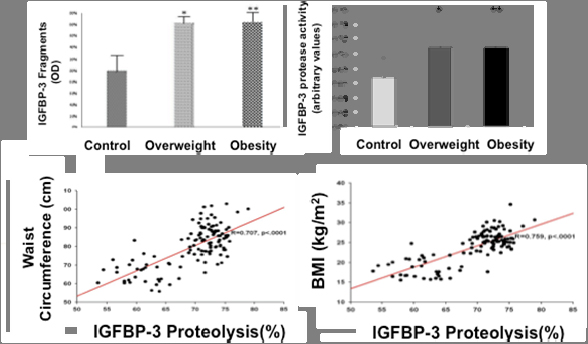Biomedical
Novel Biomarker and Potential Therapeutic for Obesity-Induced Insulin Resistance
The technology
Market need
It is estimated that approximately 25% of the USA adult population have insulin resistance, which further leads to obesity, type 2 diabetes and other metabolic disorders. Currently, the only available diagnosis of insulin resistance focuses on blood glucose/insulin level and does not allow for early detection and potential prevention of this condition.
Technology summary
This technology describes potential early diagnostic and therapeutic for insulin resistance, diabetes and obesity-induces metabolic disorders. Dr. Oh has shown that increasing degradation of Insulin-like Growth Factor-Binding Protein 3 (IGFBP-3) was found in circulation during progression from lean to overweight/obese condition in patients, resulting in systemic insulin resistance (Fig. below). Neutrophil proteases and IGFBP-3 proteolysis can be used as a potential biomarker for disease progression from high-risk state of developing diabetes to Type 2 Diabetes Mellitus (T2DM).
Furthermore, clinically available neutrophil protease inhibitors could be used as an early intervention for obesity-induced disorders, such as prediabetes, dysglycemia and diabetes.

Technology status
In vitro and in vivo data available.
